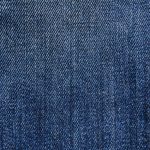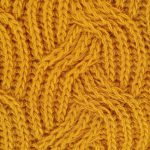If you’re looking for a fabric that’s soft, comfortable, and durable, velour is a great choice. It combines velvet’s plush texture with knit fabric’s stretch, letting you move easily without sacrificing style. Velour works well for loungewear and dressier looks alike, and it holds up nicely with proper care like gentle washing and air drying. Plus, it offers a luxurious feel for both fashion and home items. There’s plenty more to discover about how velour stands out and fits into your wardrobe.
Table of Contents
Key Takeaways
- Velour is a soft, plush fabric combining velvet-like texture with knit stretch, offering both comfort and flexibility.
- It is breathable and smooth, making it ideal for loungewear and home textiles without causing skin irritation.
- Velour is durable with good resistance to pilling, though excessive friction can wear down its pile over time.
- Proper care includes gentle washing in cold water and air drying to maintain its softness and appearance.
- Its versatility suits casual to semi-formal fashion, adding a luxurious feel to outfits and home décor.
Understanding the Composition of Velour
Velour is a plush fabric that combines the softness of velvet with the stretch of knit materials. When you explore its composition, you’ll find it’s typically made from cotton, polyester, or a blend of both.
The knit base gives velour its flexibility, making it perfect for garments that require ease of movement. Meanwhile, the raised pile on the surface, created through weaving or knitting techniques, provides that signature velvety texture.
You’ll notice the pile is usually longer and denser than typical velvet, contributing to velour’s rich appearance. This blend of fibers and construction methods means velour can be durable yet stylish.
Understanding these elements helps you appreciate why velour adapts well to different uses, from clothing to upholstery.
The Softness and Comfort of Velour Fabric
Softness plays a huge role when you choose a fabric for everyday wear or cozy home items.
Softness is key when selecting fabrics for daily wear or creating a cozy home environment.
Velour stands out because it feels incredibly smooth and plush against your skin. Its dense, velvet-like pile offers a gentle touch that makes you want to wrap yourself in it. When you wear velour clothing, you’ll notice how it drapes comfortably and doesn’t irritate your skin, making it ideal for loungewear or casual outfits.
At home, velour adds a luxurious feel to cushions or blankets, enhancing your comfort. Because it’s soft yet breathable, you won’t feel overheated or restricted.
If comfort is your priority, velour fabric will likely exceed your expectations with its inviting texture and cozy embrace.
Durability and Longevity of Velour
You’ll want to evaluate how well velour stands up to daily wear and what kind of care it needs to last.
Understanding its maintenance requirements can help you keep it looking fresh longer.
Plus, knowing how velour ages will give you a clear picture of its durability over time.
Wear Resistance
Although it looks delicate, this fabric holds up surprisingly well under regular use. When you wear velour, you’ll notice it resists pilling better than many other plush fabrics, thanks to its dense construction.
It can endure frequent movement without showing immediate signs of wear, making it a practical choice for casual clothing or upholstery. However, you should be mindful that excessive friction or rough handling can gradually wear down the pile, causing it to lose its softness and sheen.
Still, with everyday activities, velour maintains its rich texture and appearance longer than you might expect. So, if you want a fabric that balances comfort with decent wear resistance, velour won’t disappoint, provided you treat it with reasonable care.
Maintenance Requirements
Because velour combines plush texture with durability, maintaining it properly guarantees it lasts longer and keeps its appearance.
You should regularly brush velour with a soft-bristled brush to remove dust and prevent matting. When cleaning, always follow the care label instructions—many velour fabrics are best cleaned with gentle hand washing or delicate machine cycles using mild detergent.
Avoid harsh chemicals and excessive heat, as these can damage the fabric’s fibers. If stains occur, treat them promptly with a mild stain remover, dabbing gently rather than rubbing.
Also, avoid direct sunlight exposure for extended periods, which can fade the fabric. By following these simple steps, you can maintain velour’s softness and vibrant look, ensuring your items stay beautiful and durable for years to come.
Fabric Aging Effects
Anyone who invests in velour items wants them to stand the test of time. Velour’s plush texture can show wear if you’re not careful, but with proper care, it ages gracefully.
You’ll notice that over time, the fabric may develop slight crushing or matting in high-friction areas, which can dull its sheen. However, velour’s durability helps it maintain shape and softness longer than many delicate fabrics.
To keep your velour looking its best as it ages, focus on:
- Rotating usage to prevent excessive wear in one spot
- Gently brushing the fabric to revive the pile
- Avoiding exposure to harsh sunlight that can fade colors
Care and Maintenance Tips for Velour
When you care for velour properly, you can keep its soft texture and vibrant appearance for years.
Always wash velour in cold water on a gentle cycle to prevent damage. Avoid using bleach or harsh detergents, as they can degrade the fabric’s fibers.
Wash velour in cold water on a gentle cycle and avoid bleach to protect its fibers.
Turn velour garments inside out before washing to protect the pile. Air drying is best; avoid high heat from dryers that can crush the fabric’s texture.
If you need to iron, use a low setting and place a cloth between the iron and fabric to avoid direct contact.
Regularly brush velour with a soft-bristled brush to maintain its plush look.
Common Uses of Velour in Fashion and Home Decor
Although velour isn’t as common as some fabrics, you’ll find it widely used in both fashion and home decor due to its soft texture and rich appearance.
When you choose velour, you’re opting for a material that adds a touch of luxury and comfort. In fashion, designers often use velour to create cozy loungewear and stylish evening garments that feel good against your skin.
In home decor, velour enhances the ambiance by adding plushness and depth to your space. You’ll see velour featured in:
- Soft, elegant tracksuits and robes for everyday comfort
- Decorative throw pillows and curtains that enrich your room’s texture
- Upholstered furniture that invites relaxation with its velvety feel
Velour’s versatility makes it a great choice when you want both style and softness.
Comparing Velour to Other Similar Fabrics
Since velour shares characteristics with fabrics like velvet and velveteen, it’s helpful to understand what sets it apart.
You’ll notice velour has a stretchier, softer feel compared to velvet, thanks to its knit construction. Velvet, woven with a dense pile, feels more luxurious and has a shinier finish but lacks the same flexibility.
Velveteen, on the other hand, mimics velvet’s appearance but uses a cotton base, making it heavier and less stretchy than velour.
If you want a fabric that combines softness, stretch, and durability—especially for activewear or cozy loungewear—velour is a solid choice.
However, if you’re after that classic, rich look for formalwear, velvet might suit you better.
Velour strikes a nice balance between comfort and style in everyday use.
Environmental Impact and Sustainability Considerations
Understanding how velour compares to similar fabrics helps you decide not just on feel and appearance but also on its broader impact.
Velour is often made from synthetic fibers like polyester, which rely on petrochemicals and contribute to microplastic pollution. However, some velour blends incorporate cotton or recycled materials, which can reduce environmental harm.
When choosing velour, consider its production process and end-of-life recyclability. You’ll find that:
- Synthetic velour demands significant energy and releases greenhouse gases during manufacturing.
- Blended velour with natural or recycled fibers lessens environmental strain.
- Velour’s durability can extend garment life, reducing waste if cared for properly.
Styling Tips for Incorporating Velour Into Your Wardrobe
You can easily create casual velour outfits by pairing a velour sweatshirt with jeans or joggers for a cozy yet stylish look.
Don’t forget to accessorize your velour pieces with simple jewelry or a sleek bag to balance the fabric’s rich texture.
With a few smart choices, velour can add both comfort and flair to your wardrobe.
Casual Velour Outfit Ideas
When you want to add a touch of comfort and style to your everyday look, velour offers a versatile option that’s surprisingly easy to style.
You can effortlessly create casual outfits that feel both cozy and chic by mixing velour pieces with familiar staples. For a laid-back vibe, pair velour joggers with a simple tee and sneakers. If you want a slightly polished look, try a velour zip-up jacket over a fitted tank and jeans.
Don’t hesitate to experiment with color and texture contrasts to keep your outfit fresh. Here are some ideas to get you started:
- Velour hoodie with denim shorts and slip-on shoes
- Soft velour pants with a cropped sweatshirt
- Relaxed velour dress paired with ankle boots
These options keep comfort at the forefront without sacrificing style.
Accessorizing Velour Pieces
Three key accessories can instantly elevate your velour outfits: jewelry, bags, and shoes. To keep your look balanced, choose sleek jewelry like gold hoops or a delicate chain. Pair your velour pieces with structured bags to add polish. For shoes, opt for stylish sneakers or ankle boots depending on the occasion. Here’s a quick guide to help you accessorize:
| Accessory Type | Recommended Style | Occasion |
|---|---|---|
| Jewelry | Gold hoops, delicate chain | Casual to semi-formal |
| Bags | Structured leather bag | Daytime, work |
| Shoes | Sneakers, ankle boots | Casual, night out |
Frequently Asked Questions
Can Velour Cause Skin Allergies or Irritations?
You might think velour would turn your skin into a fiery battlefield, but it rarely causes allergies or irritations. Unless you’re super sensitive, velour usually feels soft and gentle, keeping your skin happy and calm.
Is Velour Suitable for Baby Clothing?
You’ll find velour soft and cozy, making it great for baby clothing. Just make sure it’s made from natural fibers to avoid irritation, and always check for allergies before dressing your little one in velour garments.
How Does Velour Perform in Extreme Weather Conditions?
Did you know velour retains warmth 30% better than cotton? In extreme weather, you’ll find it cozy and insulating but not highly breathable, so it’s great for cold conditions but less ideal for intense heat or heavy rain.
Can Velour Be Used for Upholstery Repairs?
You can definitely use velour for upholstery repairs since it’s soft and stretchy, providing a luxurious feel. Just remember, it may wear faster in high-traffic areas, so consider durability before choosing it for heavy-use furniture.
Does Velour Fabric Shrink After Washing?
You’ll find that velour can shrink if washed improperly. Always use cold water and gentle cycles to minimize shrinkage. Avoid high heat when drying, and consider air drying to keep your fabric’s shape intact.
- 5 Common Myths About Cotton Polyester Fabric, Debunked - June 23, 2025
- Your Complete Guide to Buying Cotton Polyester Fabric Online - June 23, 2025
- Is Cotton Polyester Soft? A Look at Fabric Feel and Comfort - June 23, 2025






